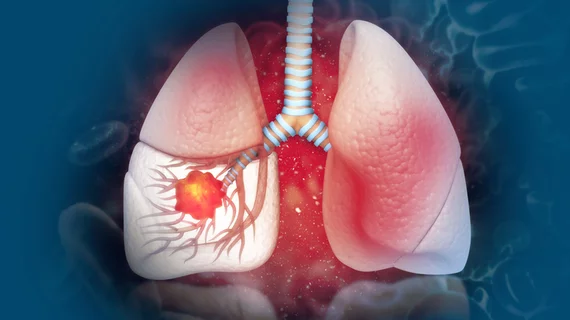Lung cancer screening poor in community settings, but targeted interventions could boost adherence
Lung cancer screening adherence is poor in community-based settings when compared to randomized trials. But addressing a few key factors could help to improve the results, according to research published Tuesday.
Only about 31% of patients remained adherent to the second annual low-dose CT screening, dropping to 16% by the third, experts wrote in the Journal of the American College of Radiology. Smoking status and history, screening site, and the specialty of their provider were found to be the most significant predictors of compliance to the first two yearly visits, a recent analysis found.
“Future work should focus on improving the implementation of LCS in community settings,” Mehrad Bastani, PhD, with the Department of Radiology at Northwell Health, Manhasset, New York, and colleagues wrote Nov. 30. “During shared decision-making visits, patients should be informed that screening is not a ‘one and done’ test and that returning for annual screening is critical to garnering the benefits of screening,” they added.
For the study, Bastani et al. retrospectively analyzed results among patients with a negative baseline CT screening exam across the integrated health network between 2015-2020. Northwell Health comprises a total of 23 hospitals and more than 700 outpatient facilities, including 10 LCS imaging sites, in the New York metropolitan area.
All told, 2,056 patients underwent a baseline scan between 2015-2017. About 3% were not eligible for the next round of imaging due to age or smoking history ineligibility, more than 1% died, and 25% had positive nodule findings at baseline and were excluded. That left a study population of 1,668 mostly white individuals (80%) at an average age of about 64.
A total 0f 512 (30.7%) patients returned one year after baseline for their first subsequent screening and 270 (16.3%) came back two years afterward. Smoking status, site of screening, and provider specialty were all found to be “significant” predictors of adherence for both subsequent screenings. Site-related variance may have been due to patient volumes, workloads of advance-practice providers, and resource allocation, the authors speculated. Meanwhile, patients referred by pulmonologists were more likely to return for the first scan, and those referred by thoracic surgeons were more likely to return for both subsequent rounds of imaging compared to others referred by internal or family medicine specialists.
“The reason behind higher adherence of patients referred by thoracic surgeons is uncertain, and future research is needed to better understand this,” the authors noted. “One potential reason is that patients may have been referred to thoracic surgeons because of elevated malignancy risk or may on their own seek out thoracic surgeons to order LCS studies and as such may be more self-motivated to be adherent.”

